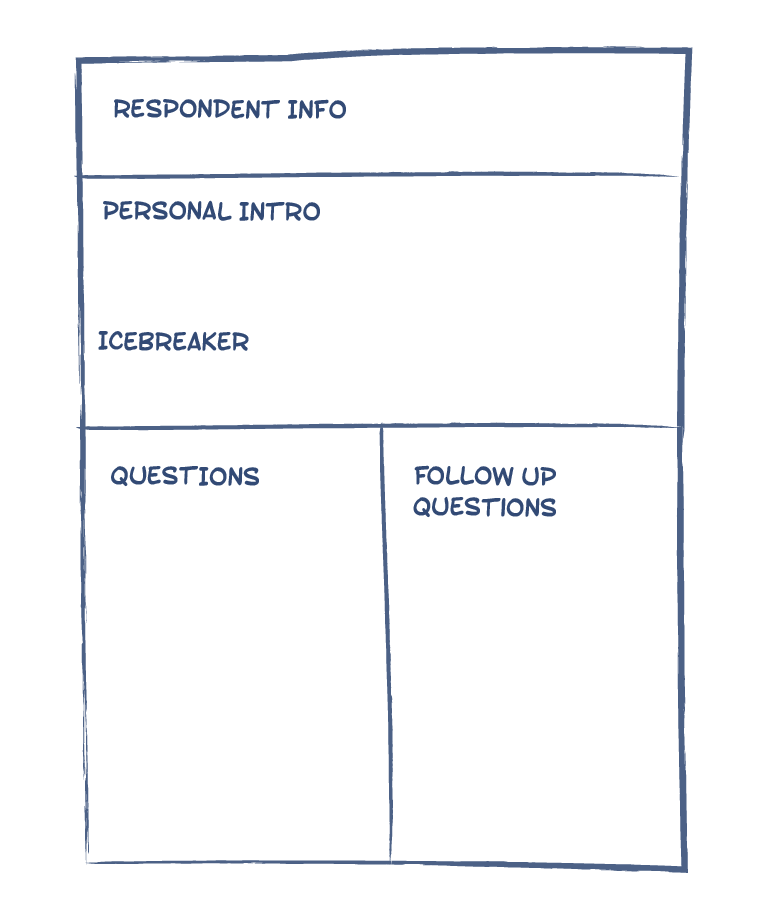HUMAN CENTERED DESIGN | DISCOVERY
User Interviews
60 Min+
Collecting first-hand accounts of experiences, needs and concerns from people can be a great source of inspiration. User Interviews are open ended conversations that take place in context (place of use of product or service, or user homes and places of work, etc.) and provide a deep understanding of user needs, attitudes, and behaviours. Interviews can be conducted with all stakeholders, not just users.
USE CASES
- Build a deep foundational understanding of needs, attitudes, and behaviours of target users and stakeholders.
- Identify ideas and co-create solutions with users, and stakeholders.
- Evaluate early concepts and prototypes with users, and stakeholders.
LIMITATIONS
Interviews take time and effort to organise, conduct and synthesise. Codifying qualitative interview data can also be challenging.

